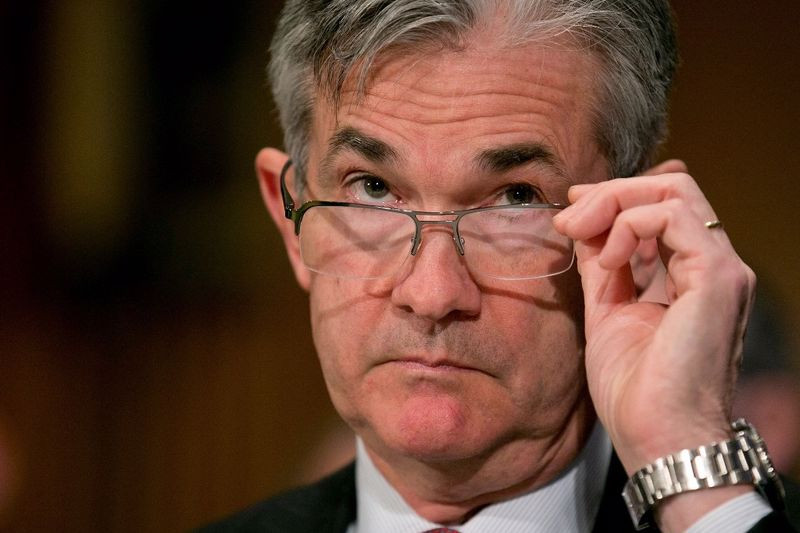At the end of the previous week, the US dollar gained 0.7% after rising by more than 1% a week earlier.
At the start of last week, the US dollar was steadily appreciating against its rivals and on Tuesday, it even managed to retest monthly highs around 103.90.
USD then retreated from those peaks following a speech by Fed Chairman Jerome Powell as markets deemed his stance insufficiently hawkish.
The head of the US central bank confirmed that the disinflationary process is already underway in the country.
At the same time, he noted that this is only an early stage in taming inflation, and the regulator will continue to monitor the incoming data to make decisions on monetary policy.
US interest-rate futures show that markets are expecting the Fed funds rate to peak just above 5.1% by July before falling to 4.8% by the end of the year.
However, Fed officials insist that a rate cut is not expected before the end of the year, and still predict a "soft landing" for the US economy.
Washington policymakers are still optimistic about the United States and its ability to avoid a recession.
"You don't have a recession when you have 500,000 jobs and the lowest unemployment rate in more than 50 years. What I see is a path in which inflation is declining significantly and the economy is remaining strong," US Treasury Secretary Janet Yellen said last week.
In a separate speech, Joe Biden said there will be no recession in the United States in 2023 or 2024.
Meanwhile, Deutsche Bank strategists believe there is a 90% chance of a recession in the US in 2023.
Historically, once inflation spikes above 8%, it takes two years to fall beneath 6%, analysts say.
Federal Reserve Bank of New York President John Williams said rates would have to stay at restrictive levels for a few years to get inflation down to 2%.
He admitted that the Fed could go back to raising rates by 50 basis points.
Thus, the 6% federal funds rate is a definite tail risk.
In such a scenario, the likelihood of a recession and a hard landing would rise sharply, confirming a deep inversion of the treasury curve.
The yield curve between 2-year and 10-year notes reached its highest level in nearly two months last week after inverting as far as minus 88 basis points.
A deep inversion in this part of the Treasury yield curve indicates fears of an imminent recession.
The revealed data raised fears that the Fed's fight against inflation is far from over, dispelling hopes for an early end to the US monetary tightening cycle.
"The more the FOMC is compelled to extend the rate-hiking cycle and postpone rate cuts, the more likely it is that the US will experience a hard landing," Standard Chartered said.
On Friday, the University of Michigan survey's reading of one-year inflation expectations increased to 4.2% this month from 3.9% in January.
"Strengthening inflationary expectations is a wake-up call for the US central bank which is trying to slow down consumer price growth," BMO analysts said.
They expect two more rounds of interest rate hikes from the Fed, and then a pause.
"We don't expect rate cuts this year," experts said.
Friday's data was released just a few days before the release of January US inflation data and after Fed Chairman Jerome Powell and his colleagues acknowledged that the recent decline in consumer prices marked the beginning of a process of disinflation.
However, they warned that this process will take some time and there is a risk of setbacks along the way, which could mean that interest rates may have to be raised higher than expected.
"It's good that inflation has started to come down with a strong labor market," Fed Chairman Jerome Powell said in a speech at the Economic Club of Washington last Tuesday.
"If the data continues to come in stronger than we forecast, and if we come to the conclusion that we need to raise rates more than market prices or what we indicated in our December forecast, then we would certainly do so," he added.
"The Fed has signaled that fresh surprises in the inflation report ahead of its next meeting in March could force the central bank to raise its rate forecast this year above the 5.1% expected in December," DBS strategists said.
TD Securities said Friday's data indicated that inflation was stronger than originally thought last year.
"It does challenge the idea that the Fed could cut rates, and stronger data such as the number of employees along with ongoing labor market tensions are pushing the Fed to be tougher for the longer term. This again puts the dollar to the forefront," they noted.
After falling to a weekly low of 102.60 on Thursday and retreating by more than 1.2% from the monthly high, the greenback managed to win back losses and add some gains at the end of the week.
On Friday, USD rose by about 0.4% and closed the session in the area of 103.50.
Meanwhile, the euro was among the outsiders of the foreign exchange market. On Friday, the single European currency fell by almost 0.6% against its US counterpart. At the end of the week, EUR lost about 1%, extending its losing streak to two weeks.
During this period, the EUR/USD pair lost more than 190 points.
The US dollar started the new week on a positive note: it rose above 103.80 and started European trade by approaching the highs from early January.
However, the greenback then retreated, losing its bullish momentum as market sentiment improved.
Wall Street's major indexes mostly rose on Monday, adding about 1.2% on average.
Investors are waiting for US inflation data for January which will be released on Tuesday.
According to forecasts, annual inflation in the US should slow down to 6.2% from 6.5% in December. Thus, the indicator may drop to its lowest value since the second half of 2021.
"The dollar received good support following the release of much stronger-than-expected US employment data earlier this month, but the picture of the economy will be updated again on Tuesday," Barclays analysts said.
Tuesday's data on the US consumer price index should shed light on the direction of the USD movement in the near term, economists at OCBC Bank believe.
"If the disinflationary trend in the US shows signs of a slow down (even if this is a temporary phenomenon), then risk sentiment may come under pressure, and the dollar will receive additional support. However, if the disinflationary trend turns out to be entrenched rather than bouncing (i.e. CPI data is weaker than expected), then the weakening of the greenback could resume," they said.
"Initial resistance for USD is seen at 103.60 (50-day moving average), followed by 104.10 (the 23.6% Fibonacci retracement from September peak to February low) and 105. Immediate support is located at 102 .50 (21-day moving average) and then to 101.60 and 100.80," OCBC Bank added.
The momentum is becoming more positive for the US dollar, primarily against the euro, according to strategists at MUFG Bank.
"It may not take long for investors to start considering the risk that the final US rate will be above the level currently indicated by the FOMC (5.00%-5.25%), and any disappointment tomorrow after several months of good news about inflation could cause a sharp movement in rates and a further rebound in the dollar. This seems like a big risk after the recent employment report," they said.
The dollar appears to be able to at least hold on to recent gains this week, according to ING strategists, who expect USD to return to 105.00 soon.
"We see a strong possibility that the EUR/USD pair will come under additional pressure, and strong US inflation readings could mean a test of the 1.0500 support level. Meanwhile, it will take fairly low CPI readings in the US for the pair to be able to sustainably return above 1.0800-1.0850," they noted.
Taking advantage of a weaker greenback, the euro recouped some of its recent losses on Monday.
Additional support for the euro was provided by the statement of the European Commission that this year the economic growth of the eurozone is likely to be stronger than previously expected.
The EC upwardly revised the outlook for GDP growth in the bloc for the current year to 0.9% from 0.3% expected in November last year.
The euro area can hardly avoid the technical recession that the EC predicted three months ago as economic growth in the region was 0.1% quarter-on-quarter in the last three months of 2022 and is expected to be 0% in the first three months of 2023.
The EC said that the uncertainty associated with the forecast remains high, but the risks to economic growth are generally balanced.
Domestic demand could be higher than forecast if the recent decline in wholesale gas prices is more strongly reflected in consumer prices and consumption proves to be more resilient. However, a potential reversal of this fall in the context of ongoing geopolitical tensions cannot be ruled out.
EUR/USD is facing initial resistance at 1.0700 (the 61.8% Fibonacci retracement level of the recent downtrend). If the pair settles above this level and turns it into support, it may head for the 1.0730 target (21-day moving average) and 1.0760 (200-day moving average).
The downward target is seen at 1.0650, followed by a psychological level of 1.0600. A close below this level will pave the way for the lower target at 1.0550.















